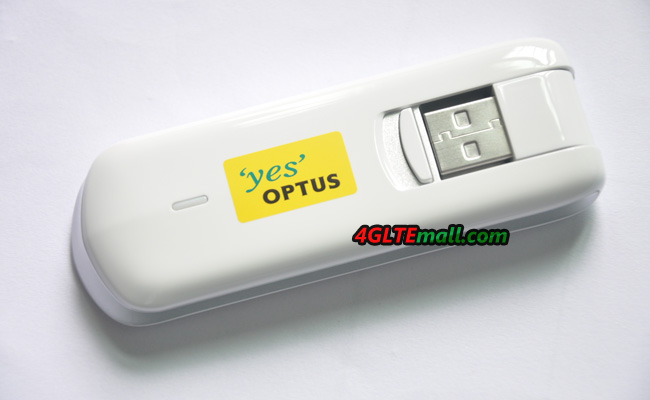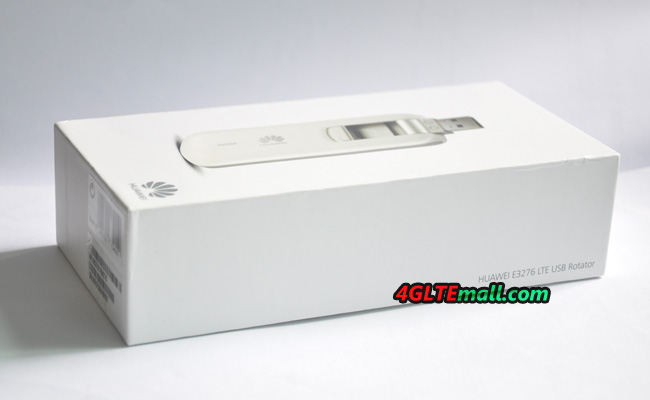| Operator | Duplexing | Spectrum |
| Vodafone Fiji | ||
| Digicel Fiji |
4G LTE Spectrum in Vanuatu
| Operator | Duplexing | Spectrum |
| Digicel Pacific Vanuatu |
Huawei E3276 4G LTE Category 4 TDD FDD USB Surfstick
The Chinese manufacturer Huawei bring E3276 as a first internet surf stick on the market that supports the LTE category 4. With the support of modern LTE category 4, theoretically better performance can be achieved. Let’s have a look which functions the device could support and whether the purchase is worth.
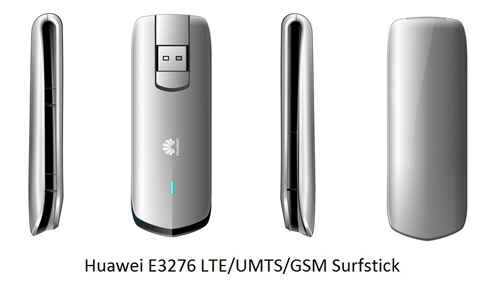
|
LTE features and technical characteristics of HUAWEI E3276 |
|
|
Manufacturer and type designation |
Huawei E3276 |
|
Download to rate |
150 Mbit / s |
|
Upload to rate |
50 Mbit / s |
|
supported LTE bands |
LTE800; LTE900; LTE1800; LTE2100; LTE 2600 |
|
backward compatible with: |
DC-HSPA +, UMTS, GSM frequencies (850, 900, 1800 and 1900 MHz) |
|
MIMO Support: |
MIMO 2×2 |
|
Connector for external antenna |
yes, 2 antenna sockets type CRC-9 available |
|
LTE category: |
LTE modem, the Category 4 (3GPP Release 9) |
|
Chipset |
HiSilicon Hi6920 |
|
Other |
|
|
Dimensions (LxWxH) |
92 mm x 32 mm x 14 mm, 30 grams |
|
USB standard |
USB 2.0 |
|
Memory card expansion |
Yes, MicroSD up to 32 GB |
|
Compatible Operating Systems |
Windows XP, Windows Vista, Windows 7, Mac OS (10.4) |
|
Data Overview |
unfortunately not yet available online |
|
Manual PDF |
unfortunately not yet available online |
Features at a glance
In addition to extremely fast speeds, the Huawei E3276 offers almost everything that a surf stick can be: For worldwide use, all five LTE frequencies are supported; you can also surf on three UMTS and quad-band GSM frequencies on the Internet. If you want to improve reception, higher signal can be achieved through an external antenna (TS-9). The huawei E3276 has specially integrated two sockets of type TS-9 connector.
The HUAWEI E3276 dominated at all the new LTE Surfstick of category 4. All previous devices have always been designed to meet the Category 3rd Concretely. Category 4 means that the LTE network even up to 150 megabits download are theoretically possible (instead of 100 Mbps), the upload up to 50 Mbit/s. The next category would be the 5th Hardware of this class, up to 300 Mbps download rate would support. Incidentally, even in the UMTS network, the Huawei E3276 offers almost LTE speed – up to 84.4 Mbit/s are possible in accordance with developed networks. Technically, the Huawei stick is therefore the most modern and fast stick, which you can currently available on www.4gltemall.com .
Despite the current relatively high price may be a big concern, the Huawei E3276 is fully recommend. Huawei E3276 incorporates better technology than any other surf stick and thus the model is extremely future-proof. What’s more, it consumes less heat other LTE sticks with technology improvement for the E3276. As an alternative, we offer the Huawei E398 which is the direct predecessor to the E3276. Or the HUAWEI E392 , also made by Huawei.
Huawei Ascend P2 4G LTE Smartphone Review
Huawei Ascend P2 4G LTE Smartphone is a good Android phone with LTE technology and quad-core processor. It comes out at the begging of 2013 and the key feature should be that HUAWEI Ascend P2 could support LTE category 4 and reach the peak speed as 150Mbps. And the smartphone could work a LTE cat4 Mobile Hotspot. Today, we will have a review of this new samrtphone and give users some advice on this new smartphone.
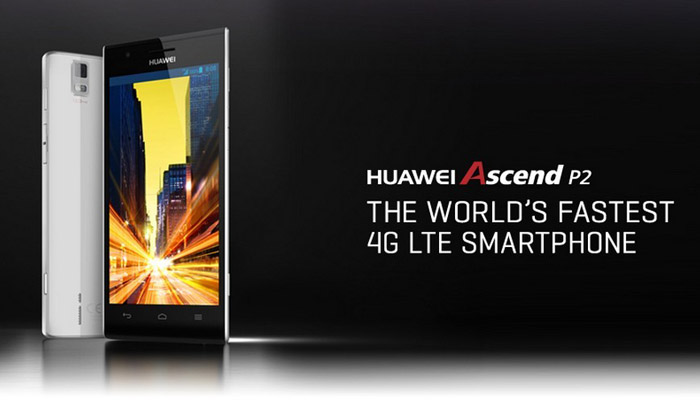
Huawei Ascend P2: First impression
HUAWEI Ascend P2 is the successor to the HUAWEI Ascend P1 3G Smartphone, which is called the world’s slimmest smartphone and it’s Huawei’s first real high-end smartphone. With the Ascend P2, HUAWEI wants to establish in the upper class.
Whether the target could be achieved from HUAWEI Ascend P2, this new Smartphone incorporates many attractive specifications, which is important for all the newcomers. HUAWEI Ascend P1 is with LTE, NFC, quad-core and 13-MP camera, and it brings all the key data corresponding with new and better customer experience. However, the plastic materials give some discount for the upper class. While it is very solid and meticulously crafted, it would not creak and squeak. However, its hepatics are not on top-class level and cannot keep up with the current high-senders as the Xperia Z and HTC one.
The glossy back cover is not removable, and shows prone to fingerprints, but closes very clean and exemplary with the rest of the housing components. Bases on this, Huawei have worked very solid.
Special: All news and tests from Mobile World Congress 2013
From less quality look and feel independently, HUAWEI Ascend P2 makes an excellent impression. The touch screen responds quickly and absolutely reliably to each entry, no one has bothered bucking the test on the show. The performance as a whole is on a very high level.
The screen immediately convinced, he draws content and especially writings very sharp. The presentation precipitated with natural colors and sharp contrast. User can reach any corner of the screen comfortably, even with one hand. In general, the Ascend P2 is pretty handy and fits comfortably in your hand.
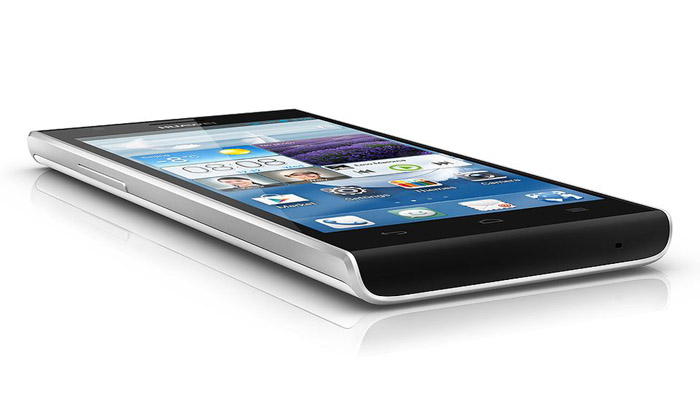
The new Emotion UI by Huawei can also convince serves based on Android version 4.1 Jelly Bean. The surface works without classic main menu; all installed applications are organized directly on the home screen, either in folders. While at first this seems odd, but certainly has its appeal. The internal memory is not expandable, but the memory card could be extended up to 16GB.
Huawei Ascend P2 Features:
* Fast LTE Internet
* NFC
* Bluetooth 4.0
* MHL via the micro-USB connector
– no HSPA+
– Memory not expandable
– Permanently installed battery
Huawei Ascend P2 Operation:
* Good performance
* High-resolution and high-contrast display
* sound processing
– Back is prone to fingerprints
– Hepatics not at the top level
HUAWEI Ascend P2 Specifications:
* Dimensions: 136 x 67 x 8 mm
* Weight: 122 g
* Display: 4.7 inch, 720 x 1200 pixels
* Processor: 1.5 GHz quad-core processor K3V2
* Platform: Android 4.1
* Memory: 16 GB
* Battery: 2,420 mAh
In conclusion, as the top telecommunication equipment supplier, HUAWEI may be a new player of smartphone, but we can see the quality of the smartphone is better and better. Even though HUAWEI is eager to gain the high-class market, but it seems there will be long way to go. HUAWEI Ascend P2 should be a new LTE smartphone worth to wait and have.
If you want to check more 4G LTE smartphones, welcome to www.4gltemall.com
4G LTE Spectrum in Papua New Guinea
| Operator | Duplexing | Spectrum |
| Digicel Papua New Guinea | 20MHz | Band 28 (700MHz) |
| Telikom PNG | 20MHz | Band 28 (700MHz) |
4G LTE Spectrum in Guam
| Operator | Duplexing | Spectrum |
| IT&E | FDD | |
| GTA | ||
| iConnect | ||
| DOCOMO Pacific |
4G LTE Spectrum in Northern Mariana Islands
| Operator | Duplexing | Spectrum |
| iConnect Northern Marianas | ||
| Pacific Telecom Northern Marianas |
4G LTE Spectrum in Indonesia
| Operator | Duplexing | Spectrum |
| XL Axiata | ||
| Indosat | 1800 MHz | |
| Telkomsel | ||
| 3 Indonesia | ||
| Axis Telekom (STC) |
4G LTE Spectrum in Philippines (Pilipínas)
| Operator | Duplexing | Spectrum |
| Smart Communications | FDD | 1800 MHz, 2100 MHz |
| Piltel | ||
| Globe Telecom (SingTel) | FDD | 1800 MHz |
| Bayan Communications | 1800 MHz |
Samsung Reach 5G Test at 1Gbps Speed and Expect to offer in 2020
The South Korean giant Samsung Electronics announced on Sunday that they forward successfully in the future development of wireless networking technology–fifth generation (5G), and it’s expected to offer this high-speed service from 2020.
This new wireless technology for mobile devices enable users to reach Internet download speeds to, for example, “a full movie in less than a second,” the company explained in a statement picked up by the Yonhap agency.
With the new service 5G, Samsung Mobile expects to reach speeds of tens of gigabits per second, far exceeding the current speed of 75 megabits per second achieved by the last service of fourth generation 4G-LTE (Long Term Evolution).
Samsung, the world’s largest supplier of memory chips and “smartphones”, managed to successfully test the new service 5G after using a frequency bandwidth of 28 GHz for transmitting data at speeds of 1 gigabit per second, something no other vendors had announced previously.
After testing up to 64 antenna elements, the technology giant that the device was able to exchange signals in real time under its new 5G platform, a breakthrough that estimates serve to launch this new service from 2020.
According to experts quoted by South Korean Yonhap news agency, with this announcement Samsung takes lead in 5G technology development towards their marketing and achieve the desired standardization of this system, called to lead the prolific mobile telecommunications market.
In early 2013, the European Commission announced an investment of 50 million euros to achieve propel this fifth-generation mobile technology with the intention of placing Europe at the forefront of the global mobile phone industry.
In addition, between 2007 and 2013, Europe spent over 700 million euros for research in mobile networks, enabling standardization great achievements as 2G GSM, still used by most of the global networks or technologies 3G and 4G.
